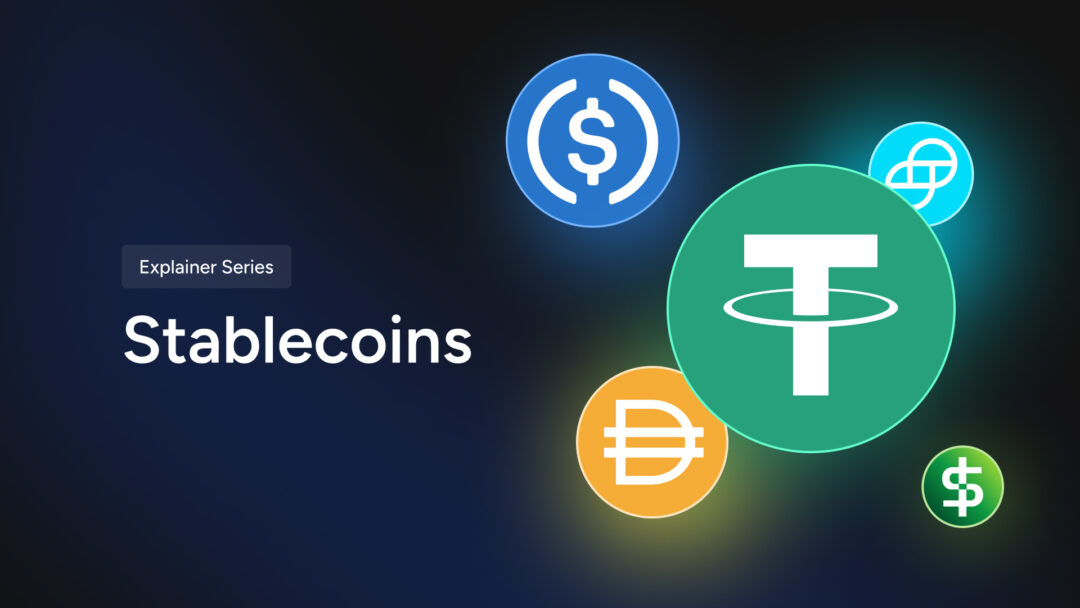
by GalaChain | Sep 11, 2024 | Web3 Explainers
Stablecoins have emerged as an important part of the web3 world, playing a crucial role in providing financial stability to a typically volatile cryptocurrency market. For those new to blockchain and crypto, stablecoins might seem like a complex concept, but they’re actually quite simple.
Think of them as a “digital version of the dollar” or other traditional currencies, designed to maintain a steady value rather than fluctuating like Bitcoin or Ethereum. In this blog, we’ll break down the concept of stablecoins, why they exist, how they work and their importance in the growing web3 world.
What Are Stablecoins?
A stablecoin is a type of cryptocurrency that is pegged to the value of a stable asset, typically fiat currencies like the US dollar or Euro. Unlike Bitcoin, which can experience dramatic price swings, stablecoins aim to stay steady. It should be noted however that no financial asset is perfectly stable, but stablecoins are comparatively stable to most cryptocurrencies.
Imagine you’re traveling to a foreign country and you exchange your money for local currency. When you return home, you expect your leftover foreign currency to hold roughly the same value. This is the idea behind stablecoins—they are designed to ensure your digital assets don’t lose value overnight, especially in the often volatile cryptocurrency world.
Why Do Stablecoins Exist?
Cryptocurrency is known for its wild price swings. Bitcoin, for example, can rise or fall by thousands of dollars in just a day. While this can be exciting for traders, it’s risky for businesses and individuals looking for stability. Enter stablecoins—designed to minimize this volatility by pegging their value to more stable assets.
Here’s why stablecoins are essential:
1. Price Stability for Transactions:
In a world where cryptocurrencies are becoming more common as payment methods, having a stable unit of currency is vital. Imagine buying a coffee for $5 worth of Bitcoin in the morning, only for that Bitcoin to lose value by the time your payment processes. With stablecoins, the value of your purchase remains consistent, making them ideal for everyday transactions. Depending on many variables (complexity, blockchain, amount), web3 transactions can take time. Vendors must rely on knowing that the price paid for a product or service is consistent with their asking price, even if the purchase takes a variable amount of time to fulfill.
2. Cross-border Transactions:
Traditional banking systems often charge high fees for international transfers and can take days to process. Stablecoins make cross-border payments faster, cheaper and easier. Since stablecoins are based on blockchain technology, you can send money across the world in minutes without worrying about the value changing dramatically during the process.
3. DeFi (Decentralized Finance) Applications:
Stablecoins have become an integral part of the decentralized finance (DeFi) ecosystem, where people can lend, borrow and trade assets without relying on traditional banks. In these systems, having a stable currency to work with makes it easier to manage risks and avoid the extreme price swings common in other cryptocurrencies.
How Do Stablecoins Work?
There are a few different types of stablecoins, each using different methods to maintain their stable value. Here are the three main types:
1. Fiat-collateralized Stablecoins:
These stablecoins are backed by actual reserves of fiat currency (like US dollars) held in a bank. For every stablecoin issued, there’s an equivalent amount of fiat currency sitting in reserve. One of the most popular examples is Tether (USDT), which is pegged 1:1 to the US dollar. So, for every USDT in circulation, there should be a dollar in reserve.
Example: If you have 100 USDT, theoretically, the company behind it holds $100 in a bank somewhere to back up your digital assets and allow your tokens to maintain their precise value.
LEARN MORE:
Fiat-Backed Stablecoins: What You Need to Know About Tether, USD Coin and Others – CoinDesk, Oct. 2022
2. Crypto-collateralized Stablecoins:
Instead of being backed by fiat money, these stablecoins are backed by other cryptocurrencies, often over-collateralized to account for the volatility of crypto. This means for every $1 of stablecoin, there might be $2 worth of cryptocurrency backing it. DAI, created by the MakerDAO platform, is a well-known example of a crypto-collateralized stablecoin.
Example: If you want to create $100 worth of DAI, you might have to lock up $200 worth of Ethereum. If the price of Ethereum falls, the system will liquidate your assets in order to keep the value stable.
LEARN MORE:
“What are crypto-backed stablecoins and how do they work?” – Nuant, July 2024
3. Algorithmic Stablecoins:
These stablecoins are not backed by any collateral. Instead, they use algorithms to control their supply, automatically increasing or decreasing the number of tokens in circulation to maintain a stable value. When the demand for the stablecoin rises, the algorithm issues more coins to bring the price down. If demand falls, the supply is reduced to increase the price back to its pegged value.
Example: TerraUSD (UST) was one of the more well-known algorithmic stablecoins before it collapsed in 2022 due to its inability to maintain its peg to the US dollar, highlighting one of the most important risks associated with this type of stablecoin.
LEARN MORE:
“A beginner’s guide on algorithmic stablecoins” – CoinTelegraph, 2023
Why Are Stablecoins Important in Web3?
Stablecoins have become indispensable in the broader Web3 ecosystem because they serve as the bedrock for many financial activities on the blockchain. Here’s why:
Liquidity and Trading
Stablecoins are often used as a medium of exchange on decentralized exchanges (DEXs). Traders use stablecoins to quickly move in and out of more volatile cryptocurrencies like Bitcoin or Ethereum without needing to cash out into traditional fiat currencies.
Decentralized Finance (DeFi)
DeFi platforms rely heavily on stablecoins. Lenders and borrowers use stablecoins as collateral, ensuring that their loans or savings won’t lose value overnight due to market volatility.
Onboarding to Crypto
Stablecoins offer a familiar value system for people new to crypto. Instead of having to understand complex pricing of volatile assets, newcomers can start by using a digital currency that mirrors traditional money.
Safety from Market Crashes
During significant market downturns, investors often convert their holdings into stablecoins to protect their portfolios. This acts like a “safe haven” during turbulent times.
Popular Examples of Stablecoins
Let’s take a look at some of the most widely used stablecoins in the cryptocurrency space:
- Tether (USDT): The largest and most popular stablecoin, pegged to the US dollar.
- USD Coin (USDC): A highly regulated stablecoin backed by US dollar reserves, known for its transparency.
- DAI: A decentralized stablecoin backed by crypto assets, primarily used in DeFi applications.
Because of their proven stability, both USDT and USDC are accepted as payment methods for many products sold in the Gala ecosystems. Additionally, payments are also accepted in both GUSDT and GUSDC, the GalaChain-bridged versions of these Ethereum-based stablecoins.
Each of these stablecoins offers unique benefits depending on the use case—whether it’s transparency, decentralization, or regulatory compliance.
Stablecoins are the unsung heroes of the cryptocurrency world, bringing much-needed stability to a notoriously volatile market. They are an essential bridge between the traditional financial system and the world of Web3, facilitating everything from day-to-day transactions to more complex decentralized financial activities. Whether you’re new to blockchain or a seasoned crypto trader, stablecoins play a pivotal role in making digital assets more accessible and usable.
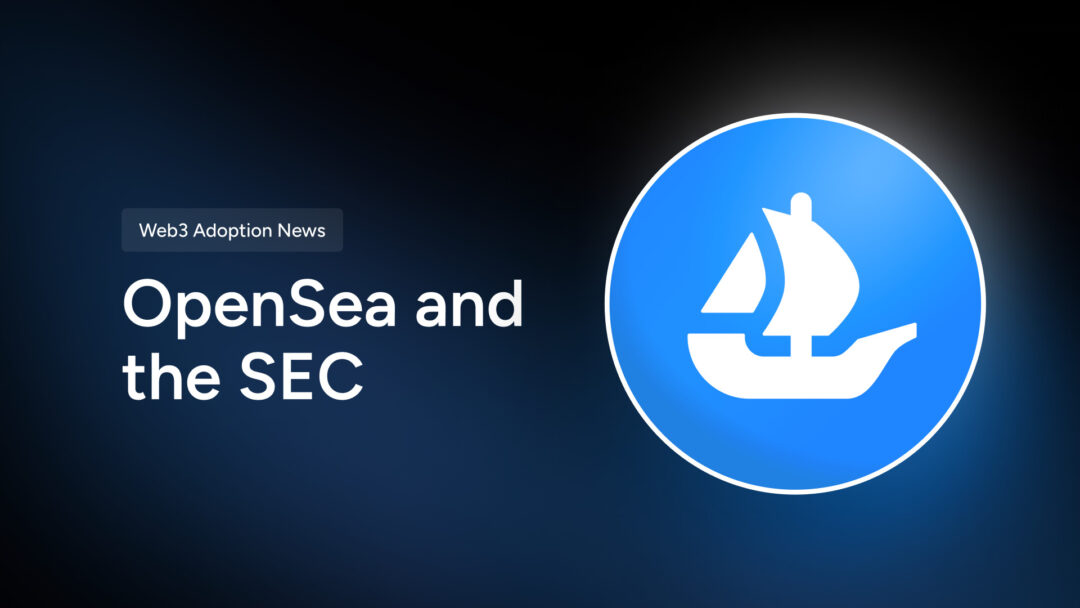
by GalaChain | Sep 5, 2024 | Blockchain Adoption News, GalaChain
Last week it was reported that OpenSea, the world’s leading NFT marketplace, received a Wells notice from the US Securities and Exchange Commission (SEC), leading to lots of noise in the crypto space.
What is a Wells Notice?
The name of this type of notice comes from the Wells Committee, a legal advisory group created by the SEC in 1972 to review the agency’s enforcement practices, named after the SEC general counsel at that time, John A. Wells.
A Wells notice is given to a person or company following a completed investigation. It is a formal notice used to inform the subject that infractions have been discovered by the SEC, giving the investigated company or person an opportunity to publicly address and respond to the investigation prior to any rulings that might follow.
While the SEC neither confirmed nor denied any such regulatory investigation of OpenSea, in the NFT platform’s August 28th response, it stated that the notice “indicates that the SEC is considering bringing a lawsuit against OpenSea.”
OpenSea’s Position
OpenSea has not wavered in its position that NFTs on its platform should not be regulated as securities. Openly taking a stand for the rights of creators, artists and innovators who use the OpenSea platform, CEO Devin Finzer has pledged $5M (in addition to its own defense) to assist with legal fees for any creators or developers who have also received a Wells notice related to their NFT activity.
“NFTs are fundamentally creative goods: art, collectibles, video game items, domain names, event tickets, and more. We should not regulate digital art in the same way we regulate collateralized debt obligations.”
“We hope that the SEC will reconsider its stance and approach this issue with the open-mindedness it deserves.” –Devin Finzer, OpenSea CEO
Ongoing Debate
The question of whether regulatory agencies would consider treating non-fungible tokens as securities has been looming over the web3 space for the last few years.
While the debate has attracted the attention of the wider crypto world and concern from NFT collectors, the consequences of classifying NFTs as securities under US law would fall primarily on the creators and sellers of NFTs.
The SEC’s mission is to protect investors by maintaining fair, orderly and efficient markets. If NFTs were considered securities, then those who purchased them would be considered “investors” – The SEC would then be obligated to protect them.
Previous Enforcement Actions
While this is the first Wells notice from the SEC to target an NFT marketplace, several exchange platforms have received Wells notices, including Coinbase, Kraken, Robinhood, and decentralized exchange protocol Uniswap.
The question of whether or not certain types of digital goods will be regulated as securities has been approaching for some time, and veterans of the space have seen it coming.
Looking Ahead
Like regulation of cryptocurrency, regulation of non-fungible tokens on some level is inevitable. The majority of web3 innovators welcome such regulation with openness and compliance, because it allows the clarity needed to create and effectively execute projects.
At Gala, we stand with OpenSea that NFTs are not securities and their owners are not investors. We are however fully committed to regulatory compliance as these questions are settled over the coming months and years.
Ultimately, coming regulations should be seen as a sign of web3 adoption and we look forward to a world where such issues are settled, where we can fully focus on the empowerment and progress made possible by blockchain technology.
SOURCES
CoinDesk – “OpenSea Gets ‘Wells Notice’ from SEC, Which Calls NFTs Sold on Platform ‘Securities’”
OpenSea – “Take a Stand for a Better Internet”
CNBC – OpenSea Recieves Wells notice from SEC, regulator says NFTs are Securities
CoinTelegraph – “NFTs can be Securities but SEC Wells Notice to OpenSea ‘Not Productive” -Lawyer”
Investopedia – “Wells Notice: What it Means, How it Works”
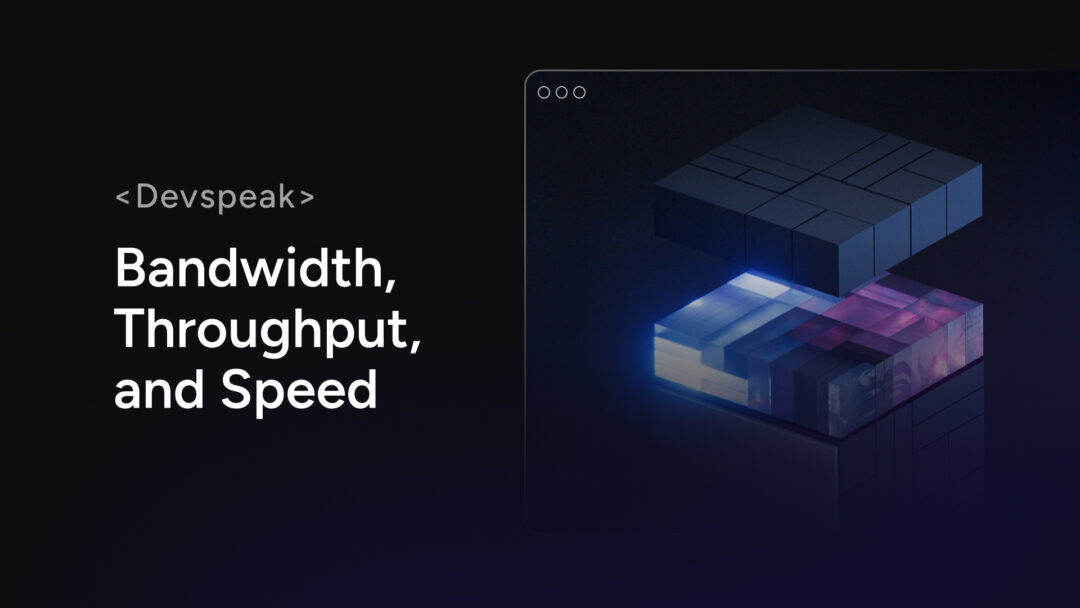
by GalaChain | Sep 4, 2024 | DevSpeak
There’s a lot of jargon in the tech world. Sometimes, you may understand these terms on their face, but their nuances in relation to technology takes a bit of deeper understanding. Luckily, DevSpeak is here to have your back.
You’ve probably frequently heard terms like “bandwidth,” “throughput,” and “network speed,” especially when discussing internet connections. But what do these terms really mean, and how do they impact your online experience? For those new to tech, understanding these concepts can be confusing. People regularly lament, “but I have a fast connection!”, in response to data speed problems… but the speed of your connection is only one factor in determining data transfer speed and efficiency.
In today’s DevSpeak, we’ll dive into these terms so you can confidently understand what each does and doesn’t mean. Use this knowledge wisely to understand your digital connections better… and to not put your foot in your mouth the next time you’re having a casual conversation with a developer.
Bandwidth, Throughput, and Network Speed, Defined
Let’s grab a very basic analogy here and hold it close as we explore these terms. Think of your internet connection as a highway. There’s lots of data packets trying to get through on the highway both ways.
- Bandwidth: Think of this as the highway itself. Bandwidth is the total width of the road—the number of lanes available for cars (data) to travel on. The more lanes you have, the more cars can travel at the same time. In technical terms, bandwidth refers to the maximum amount of data that can be transmitted over a network in a given amount of time, usually measured in megabits per second (Mbps). Just because you have a solid maximum bandwidth, however, doesn’t mean you’ll always transmit data at those speeds… highways have other things that slow down traffic.
- Throughput: Now, consider the traffic on the highway. Throughput is the number of cars that successfully reach their destination per unit of time. Even if you have a wide highway (high bandwidth), the actual traffic (throughput) might be lower due to various factors like road conditions or accidents. In network terms, throughput is the actual amount of data that gets successfully transmitted from one point to another over a given period of time.
- Network Speed: Finally, network speed is the time it takes for a car to travel from point A to point B. It’s influenced by both bandwidth and throughput, but also by the car’s speed (latency). If the road is clear and cars are moving fast, data reaches its destination quickly. Network speed is often what people refer to when they talk about how “fast” their internet connection is, though it’s really a combination of several factors.
Different Metrics for Different Network Capabilities
These three terms — bandwidth, throughput, and network speed — each describe different aspects of your internet connection’s performance:
- Bandwidth determines the potential maximum capacity of your connection. Think of it as the upper limit.
- Throughput shows how much of that potential is being used effectively, giving you a realistic measure of your current connection.
- Network speed impacts your experience of using the internet, like how fast pages load or how quickly you can stream videos.
To continue with our highway analogy, you could have a wide road (high bandwidth) but still experience slow traffic (low throughput) due to construction work or traffic jams. Similarly, even with good traffic flow (high throughput), if your cars (data packets) aren’t moving fast enough due to speed limits (latency), you’ll feel that your network is slow.
Let’s step outside of our analogy for a minute here. Keep in mind that data transfer is a 2-way issue. While you may be sending data packets efficiently and quickly, perhaps the other side of that connection is experiencing difficulties. Maybe a data center in between the two endpoints is congested. It’s a big internet, and it takes two to tango.
Not All Connection Problems Are Equal
Understanding these distinctions helps explain why sometimes your internet feels slow even if you have a high-speed plan. For instance:
- Congestion: Just like rush hour on a highway, too many users online at the same time can lead to lower throughput, even if you have high bandwidth. Try connecting to two games, spinning up several YouTube videos and opening 42 tabs on Chrome to experience this limiting situation.
- Latency: If your data takes a long time to travel across the network, it doesn’t matter how much bandwidth you have—your experience will still feel sluggish. Often this can be because of how far data is traveling, or how many stops in between. A ping test to the address you’re transmitting to can give you a good idea here. Ping is measured in ms, and tells you how long a signal takes to go to the other side and come back to you.
- Packet Loss: Imagine some cars not reaching their destination at all due to accidents. In networking, this is called packet loss, and it can drastically reduce throughput. This one can be tougher to isolate into one experience… but trying to connect on bad wifi is usually a pretty good parallel. Try sitting with your laptop outside with a yard sprinkler between yourself and your wifi router. Those water droplets are each scattering part of your data stream, leading to lost packets that never make it to your laptop or to their destination.
When troubleshooting a slow internet connection, it’s important to consider all three factors—bandwidth, throughput, and network speed. The problem is usually a combination of them, but rarely in equal proportions. Deal with the biggest issue first, then reassess the situation.
Knowledge Transmitted
Understanding the differences between bandwidth, throughput, and network speed can help you make informed decisions about your internet service and troubleshoot connection issues more effectively. Remember, a wide highway (bandwidth) doesn’t always guarantee smooth traffic (throughput), and how fast you can get from point A to point B (network speed) depends on several factors working together. Once you grasp, you’ll be better equipped to navigate the digital highway with confidence.
Hopefully this DevSpeak showed you how to more confidently conversate about these networking topics and also gave you some practical knowledge about connection problems that we all face from time to time in our digital lives.
Even if you’re not the most techy person in the world, these are important concepts that everyone should know at least a little about. We’ll be back again soon with another DevSpeak to bring you more clarity to the confusing terms tossed around tech!
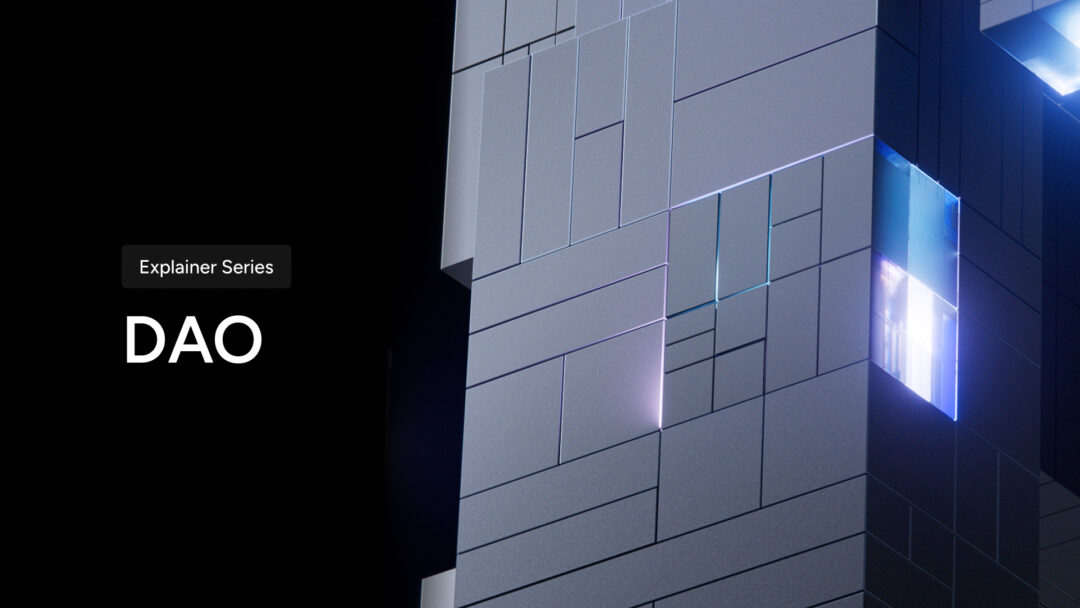
by GalaChain | Aug 29, 2024 | Blockchain Adoption News, GalaChain
Imagine a company or an organization that instead of being controlled by a CEO or a board of directors, is run by the people who use its services or participate in its community. This is essentially what a DAO, or Decentralized Autonomous Organization, is.
In simpler terms, a DAO is like a cooperative business or club where everyone involved gets a say in how things are done. But instead of having meetings in person, all decisions and rules are managed online, using blockchain technology. This setup ensures that the organization is decentralized, meaning no single person or group has complete control.
It’s autonomous because it essentially operates itself according to rules encoded in smart contracts, which are self-executing pieces of code on a blockchain.
How Does a DAO Work?
DAOs work through a series of smart contracts, which are basically programs running on a blockchain. These contracts define the rules of the organization, automatically enforcing decisions made by the community. Here’s a breakdown:
Proposals: Any member of the DAO can propose changes, new projects or other decisions about current operations or the future of the DAO.
Voting: Members then vote on these proposals. In a truly decentralized system, each vote is weighted by how much stake (often in the form of tokens) each member holds.
Execution: Once a proposal is approved by the majority, the smart contract automatically executes the decision without need for any human intervention.
LEARN MORE:
“What is a DAO and How Does It Work?” – Cointelegraph, August 2024
Why Are DAOs Important?
DAOs represent a shift from traditional hierarchical structures to more community-driven models. Here’s why they’re significant in the web3 world:
Decentralization: Power is distributed among all members instead of concentrated into a single centralized entity, reducing the risk of corruption or poor management. This distribution also reduces the consumer-to-business trust necessary for an effective organization. In fact, DAOs could almost alternately be called democratized autonomous organizations, but decentralization is a more apt description.
Transparency: Every decision and transaction is recorded on the blockchain, making the organization’s operations fully transparent. For centralized organizations to achieve this level of transparency, there must be a well established routine of sharing information with the users, such as the way publicly owned companies share quarterly financial reports or how a traditional non-profit organization’s financials are shared with its community.
Inclusivity: Anyone with internet access and the required tokens can participate, making DAOs more inclusive than traditional organizations. Because of their ability to essentially manage themselves, DAOs lend themselves well to greater specialization, allowing people to participate in governance in fields for which they are especially qualified, no matter where they live in the world.
Global Reach: DAOs can operate across borders, allowing global participation without the need for a centralized authority.
Examples of DAO Benefits
To make this concept more relatable, let’s consider a few scenarios:
Community-Driven Development
Imagine a group of indie game developers who come together to create a new game. Instead of going through a traditional publisher, they form a DAO. Players and fans can buy tokens to join the DAO and vote on game features, funding allocation, or marketing strategies. This way, the game evolves according to the community’s preferences, and profits are distributed among all contributors.
In this example, the use of a DAO not only covers the governance of their project, but also provides development funding through the sale of tokens.
Charitable Organizations
A charity could be run as a DAO, where donors get to vote on which causes should receive funding. Because all transactions are on the blockchain, donors can see exactly how their money is being used, ensuring transparency and trust. As a result of these benefits, more people could be inclined to donate.
Government Organizations
While the governments of the world are understandably hesitant to begin using a technology as new as blockchain, DAOs would serve well for many aspects of government operations. As traditional democratized voting processes become more corruptible, the security and transparency of DAOs could help protect voting rights and election sovereignty, aligning more closely with the will of the people.
LEARN MORE:
“The Power of DAOs Will Be Unleashed When Boomers Leave the Workforce” – Forbes Trends, August 2024
The Gala Ecosystem and DAO Principles
While the Gala ecosystem doesn’t currently operate as an official DAO, it shares many of the principles that make DAOs powerful. At Gala, community input is highly valued, especially through platforms like Discord and Telegram, where feedback is actively monitored and considered in decision-making.
For instance, Gala’s Founder’s Nodes—a network of community-run nodes—play a crucial role in maintaining and securing the GalaChain, which is a key part of the Gala ecosystem. These nodes are operated by community members, and the decisions regarding the ecosystem’s future increasingly involve community voting and participation, which mirrors the decentralized governance seen in DAOs. Nearly all important decisions about $GALA tokenomics are presented to the Founder’s Node community for a governance vote before being put into practice.
Gala’s Path Toward Decentralization
Gala is not just stopping at community feedback. The long-term vision is to move toward greater decentralized autonomy, similar to what a DAO offers. This means that as GalaChain evolves, Gala wishes to see control over the ecosystem gradually shift more toward the community, aligning with the ultimate goal of decentralization.
Even if Founder’s Node operators do not technically represent a DAO themselves, the goal is to see GalaChain channel creators ultimately having the ability to create DAOs for their project, platform, service, etc. We are creating a secure and scalable web3 ecosystem built on a layer-1 blockchain with the power to host numerous community-created DAOs.
In summary, while Gala isn’t a DAO in the strictest sense today, it embodies many DAO principles and is progressing toward a future where the community could have even more say in the governance and direction of the ecosystem.
Thanks for reading our latest web3 explainer article! Hopefully you learned a little something!
Create a free Gala Games account
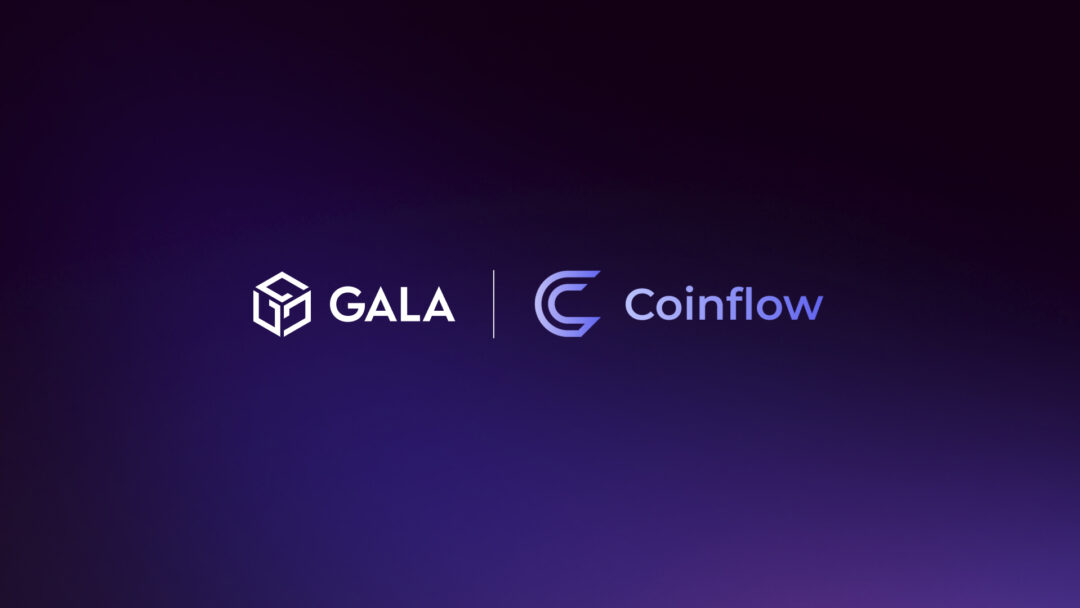
by GalaChain | Aug 27, 2024 | GalaChain
Announce the latest development in our partnership with Coinflow: the integration of Google Pay and Apple Pay as new payment options for the Gala Games ecosystem. This update marks a significant milestone in our mission to provide our community with the most accessible and versatile payment solutions.
Expanding Payment Horizons
Continuing to build on our recent integration with Coinflow, we’re now enabling Google Pay and Apple Pay as payment methods, making it easier than ever for users to interact with our platform. This enhancement empowers our users to engage with the Gala ecosystem using the payment tools they trust and prefer, streamlining the experience of owning and interacting with digital assets on GalaChain.
For the first phase of this rollout, Google Pay and Apple Pay options through Coinflow are limited only to the Gala Games store, but with future updates we hope to expand this payment variety to Gala Music, Gala Film and beyond.
Streamlined Mobile Experience
As part of our ongoing efforts to innovate and enhance the user experience, the addition of Google Pay and Apple Pay underscores our commitment to bringing decentralized entertainment to a broader audience. With the recent wave of new users coming from our free Telegram mini app “tapper” games, Treasure Tapper and Music Coin, creating a smooth mobile onboarding experience has become especially important.
These payment methods are recognized and used by hundreds of millions of people worldwide, making them a natural fit for our ecosystem. With this integration, we are not only simplifying transactions but also paving the way for more mainstream adoption of web3 digital assets.
The Future of Decentralized Entertainment
We are excited about the possibilities this integration opens up for our users and the broader Gala community. As we continue to innovate and expand our ecosystem, we remain committed to making decentralized entertainment more accessible, engaging and rewarding for everyone.
Stay tuned for more updates, and thank you for being a part of our journey! Together, we are reshaping the future of entertainment on GalaChain.






